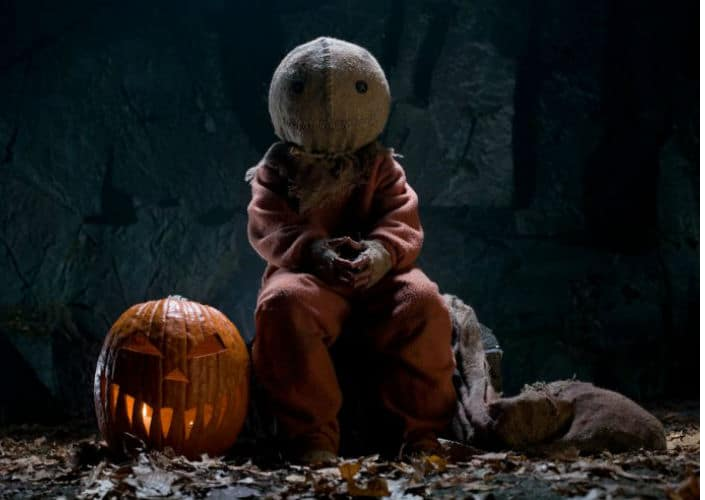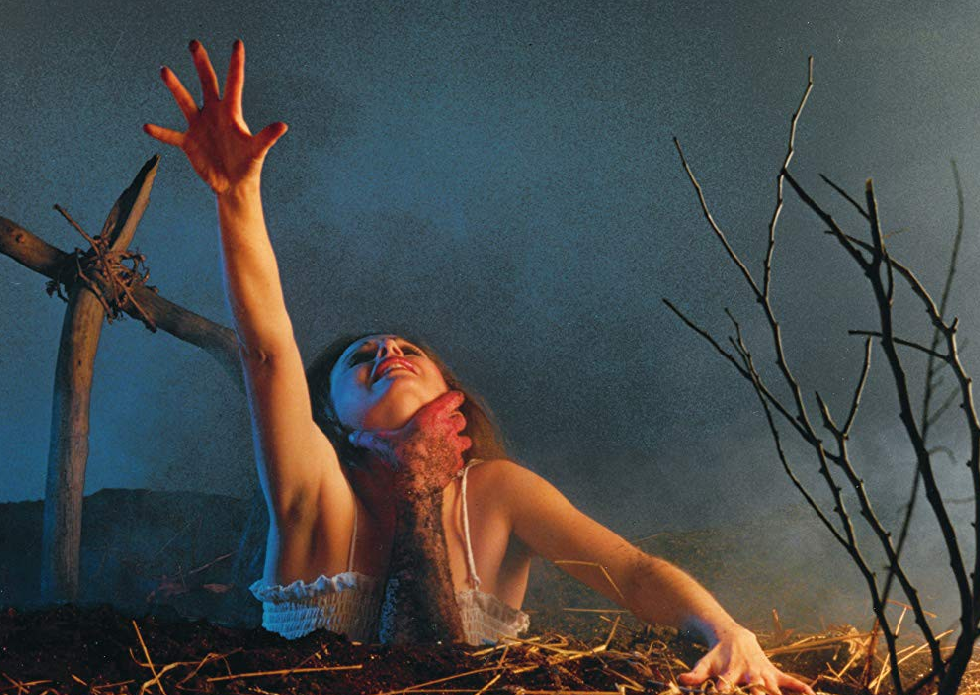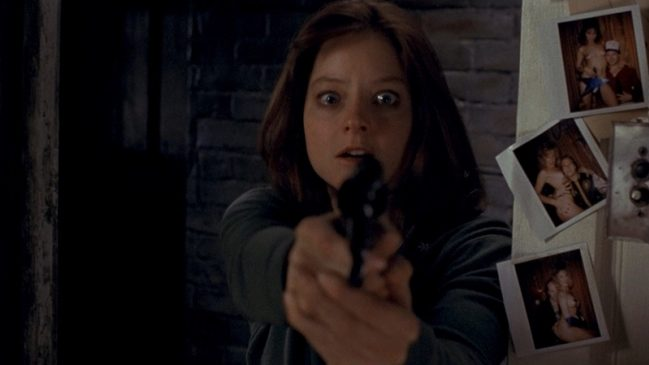The Horror of Rooting for the Lead Character
- Holly Faye Dixon
- Mar 31, 2020
- 5 min read
Updated: Feb 2, 2021
Horror is hugely subjective. A horror movie or book will usually exploit or evoke a certain fear like the fear of zombies or demons or clowns, a fear which might be the scariest thing in the world to one person or laughably mild to another. It is like we all have a subconscious checklist in our minds that keeps track of what we find scary. Spiders? Scary. Chainsaw-wielding maniacs? Very scary. Talking skeletons? Not even slightly scary. However sometimes a good director, actor, special effects or a chilling soundtrack can make a film that successfully manipulates the audience into being afraid of things that we usually wouldn’t find scary.
I know a horror movie or book has scared me if - after the credits or the final page - I move around my house on edge, half expecting something to see something out of the corner of my eye or if the creepiest images and scenes flash under my eyelids when I try to fall asleep. There are a rare few films that have done this for me, The Silence of the Lambs being one that can still creep me out to this day even if I just watch one scene.
But horror movies don’t need to turn me into a nervous wreck sobbing in the corner in order to be considered ‘good’. My favourite horror movies - the ones that I return to again and again - often have the following elements in common: an intriguing story and plot, scary or even mildly creepy ‘monsters’, concepts or entities and likeable characters.
In my opinion, the best horror isn’t the kind where you loathe the lead characters and are gagging for their gruesome, humiliating deaths throughout - although watching horror movies of this kind can be very satisfying and entertaining, especially when viewed with friends who can help you mock said characters. The best horror isn’t the kind where you are indifferent to the protagonist - who seems bizarre and composed in an almost alien-like way - to the point where their demise or survival has little to no effect on you (Stoker embodies this eerie feeling well).
The best horror is the kind where you are enamoured with the characters, endeared by their dialogue and actions and they speak to you so much that you care about them. You might care so much that you long for their survival, you long for their dreams to be realised, you desperately hope that whatever horrific entity plagues this movie or book will bypass these characters despite decimating everyone else in their path. I find that horror movies and books stay with me far longer when I treasure the protagonist so much that their death pains me and I mourn them for days afterwards.
Part of the success of The Haunting of Hill House can be attributed to this factor, I think. Throughout the TV series, the audience grows increasingly affectionate towards the Crain family as we see them when they were happy in their youth - and we fear for the family’s fate when they are at the mercy of Hill House. Nell’s story is terrible and tragic - the circularity and inevitability of her death and the way it is foreshadowed is chilling. But I was most charmed by Olivia (possibly because she was played by Carla Gugino who I have always found to have an enchanting onscreen presence). I adored her motherly warmth and I empathised with the feeling of being afraid of yourself when Olivia was terrified that her declining mental health (and Hill House’s hold on her) would lead her to harm her children. When she was cruelly preyed upon by the house and convinced to commit suicide, I grieved her. The Haunting of Hill House wasn’t particularly scary because of its supernatural ghosts or malevolent house. Hill House was scary because every scene threatened to swallow whole characters that I had grown to love and fear for.
I think the effectiveness of these character-led horrors lie in how close it feels to how we experience horror in our everyday lives. I have noticed when I watch true crime documentaries about gruesome murders that I am terrified on two accounts. First and most obviously, I am scared of the person capable of committing the act, afraid of the possibility that the same could happen to me and scared of what the human mind is capable of. But there is also a fear and a deep sadness I feel for the victim after their death. This sense of horror is often intensified when I am given enough information to like the victim as if I knew them when they were alive. This was most evident when I watched the documentary Dear Zachary, whereby Andrew Bagby is spoken about with so many touching and heartwarming stories that his murder (and the eventual murder of his son Zachary) was painful to the extent that I wanted to scream. We experience this kind of second-hand grief every time we watch the news and see another natural disaster, another school shooting, another terrorist attack. These are the moments when horror blurs our reality. It is when this human ability to mourn the victims is applied to horror movies and books that the genre is - in my opinion - functioning at its scariest.
I keep going back to The Silence of the Lambs over and over like a true masochist, because it is crafted so beautifully, from the music to the cinematography. While I know a big part of the attraction is that it is well-written with horrifyingly gory imagery and an unrelenting build of tension throughout, a part of me comes back to suffer time and time again for Clarice. Clarice felt like a unique horror movie protagonist because unlike other female leads, Clarice didn’t run from the things that scared her. She walked towards them not out of stupidity or a lack of self preservation, but because she was determined to help people who were as vulnerable and wounded as she felt. She didn’t run away to protect herself, even when the lights were off and Buffalo Bill was seconds away from killing her in his basement of horrors. And unlike many female protagonists in horror movies prior to the film’s release, Clarice was made to be strong, career-minded, capable. She was relatable because she was trying to overcome the trauma of her past and because she refused to compromise her intelligence and professionalism in the male-dominated world of the FBI. Seeing a woman fight so fiercely against the most terrifying obstacles to achieve career success was inspiring.
For me, horror movies aren’t at their scariest when spearheaded by cowardly and perpetually screaming protagonists that make all the wrong choices and have me yelling at the screen to not check out the spooky noise or go into the abandoned house. It is because of fantastic horror movie characters like Clarice that the horror movies I enjoy the most are the ones where characters I care about stand bravely at the centre while I sit frozen in fear, dreading the moment that they might meet their demise.
Maybe heart wrenching and scary horror movies aren’t the most uplifting things to be watching during this period of isolation but if you like horror movies and are keen to check out some you might not have seen yet, I’ll list some below.
Silly quirky horror movies (the kind that you can watch on Halloween without getting too spooked):
Trick R Treat (2007)
Scream (1996)
Nightmare on Elm Street (1984)
Yell at the screen, scary, probably will hate every character horror movies for movie nights:
Texas Chainsaw Massacre (1974)
Evil Dead (1981)
Friday the 13th (1980)
Horror movies that might also make you cry or have you rooting for the leads:
Hush (2016)
IT: Chapter 2 (2019)
The Silence of the Lambs (1991)
Us (2019)
Psycho (1960)
Image Credits:
https://www.spoilertv.com/2018/10/the-haunting-of-hill-house-season-one_13.html
https://www.popsugar.co.uk/entertainment/How-Did-Make-Episode-6-Haunting-Hill-House-45418068
https://www.rollingstone.com/tv/tv-features/the-haunting-of-hill-house-review-737658/
https://filmschoolrejects.com/31-things-we-learned-from-michael-doughertys-trick-r-treat-commentary/
https://borrowingtape.com/the-cine-files/feature/film-analysis-scream-1996
http://wolfbaneblooms.com/looking-back-on-37-years-of-friday-the-13th/
https://medium.com/filmarket-hub-academy/30-in-30-a-month-of-horror-the-evil-dead-ac492d5d2ae9
https://dagondogs.com/2017/02/15/hush-2016-quick-dirty-review







































Comments